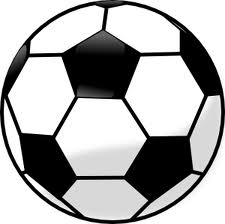>SoccerLifeHacks
 Soccer Hacks off the Field
Soccer Hacks off the Field
- Phone Number on Your Ball - Most people recognize a phone number. You recognize your phone number and a few phone numbers of your friends. If you loose your ball then there is a chance that someone will phone you to say where it is and or how to get it if it has a phone number on it. If you put a last name on it then you team mate will know but no one else. If you put your First name on it then any stranger can then start addressing you by your first name just by holding your ball(Not necessarily the introduction you want for a child).
- Your Ball should be properly inflated - A soft soccer ball is dangerous for concussions and for ankles. FIFA regulations set the pressure of a ball between 8.5-15psi but 9-11psi should be the range that you practice and play with. Inelastic collisions between ball and head or foot mean that energy transfers are instantaneous and do not encourage concussions or twisting. Without any depression you also know what the ball is going to do when it is hard.
- Plastic Bag for your Kit bag - Bring a big plastic bag that you can fit your kit bag into. If conditions are uncertain or wet get you bag under plastic as soon as possible so that you phones, shoes, shirts, shin pads and other pieces stay as dry as possible. Use your water bottle to hold closed the open end and keep the rain out.
- Players Dress to Conditions - Come to games of practices dressed appropriate ot the weather. Layers are always the answer to wet, cold or wind. Wear the layers and as you become warmer remove them. Wool or stay dry materials will always be the warmest in all conditions. NEVER cotton!
- Players are Cold - Put on two or three Practice Pinneys underneath a soccer jersey to act as a thermal layer which is light weight and warm even in the rain. Cold and shivering takes away from playing ability. If too warm then take one layer off the next time you rotate to the bench.
- Tarp as Shelter - Caught in cold or windy rain without any shelter just have players stand on one edge of a tarp with their backs to the wind. Hold the other edge over the heads. The wind is blocked, the players do not get wetter and the body heat of the group together keeps players game warm.
- Tarp as Kit cover - Caught in rain and kit bags getting soaked? Have players put their bags on one half of a tarp on the downwind portion of the tarp. Fold the tarp over the bags and weigh the corners of the tarp down with water bottles.
- Weights in the field - Have water bottles with carabiners to allow a simple water bottle to also be used as a tarp or cover weight when not being consumed. It also means the bottle can be clipped to your kit bag and less likely to be lost or forgotten.
- Getting Cleats Dry - Take a soaked cleat and stuff it with 1-2 pieces of newspaper for X minutes then remove and throw out newspaper then repeat. The X of each stuffing should be 2 , 4 , 8 , 16 and 32. After 5 iterations leave newspaper out and allow to air dry(see below). Needless to say parent should buy a newpaper when they go to tournaments.
- Air Drying Cleats - On a ledge above the ground or on a staircase (not the bottom of the steps) place cleats toes up to dry for 6-12 hours. Loosen or remove any insoles while this is happening.
- Drink Water or Rehydration formulas - Pop, sweet sports drinks or energy drinks do little to no real hydration in game conditions. Be sure you are hydrating before, during and after play. Reference Information = WHO (World Health Organization) Sponsored Oral Re-hydration Formula. Homemade ORF
- Water during Travel - Players dehydrate if they have to travel for more than 1 hour prior to a game. Eight(8) ounces [250 ml] of water is necessary for every hour of travel to be consumed during but at least 20 minutes before game time. The effects of travel dehydration are most evident in the 2nd half of play but is substantial. Worry about it for peak performance.
- Water from the Sidelines during Play - Players are not allowed off the field during play. Parents and coaches are not allowed on a field during play. Objects are not allowed to be thrown onto the field at any time. A player can come to a sideline and reach and receive a water bottle or hydration drink, drink it and place it back. This can be done in the bench area and it can be done from parents. It can be during play or in breaks of play.
Send me a Comment or Hack to add
Updated 2021-01-12 rwh
 Soccer Hacks off the Field
Soccer Hacks off the Field